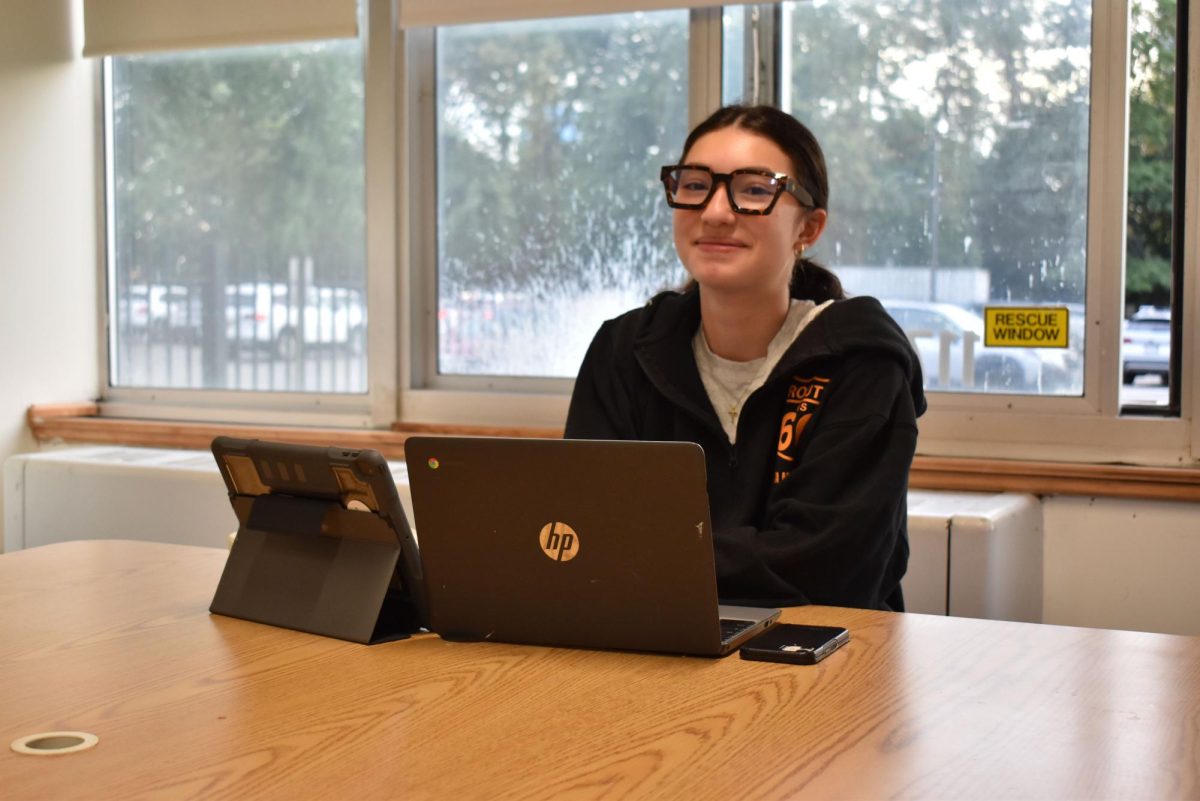Solar eclipses are a biannual phenomena, yet their reach causes one location to see a solar eclipse every three to four centuries. Long Island happened to be outside the path of totality, and residents experienced a partial eclipse. This event was thrilling to watch for many students and faculty at NHP Memorial alike and was a widely appreciated experience.
On April 8, a total solar eclipse was visible over several states in North America. Long Island was not on the path of complete totality, however residents were still able to experience a partial eclipse. New Hyde Park saw 89.56% coverage, which means that a complete solar eclipse occurred near New Hyde Park Memorial High School. The eclipse reached near totality for 3 to 4 minutes between 3:15 pm to 3:30 pm.
A solar eclipse is an event in which the moon gets in between the sun and the Earth. This blocks most of the sun’s light from reaching earth for a short period of time. This event is often confused with a lunar eclipse, where the earth gets in between the sun and moon, resulting in a shadow cast on the moon.
There are multiple types of a solar eclipse. Some are based on where the observer is in relation to the path of totality, a line which marks the areas experiencing a complete eclipse. There are also the annular eclipses which occur every one to two years, where the moon appears too far from Earth to completely cover the sun.
Total solar eclipses are a rare phenomena due to the moon’s axis around the earth being slightly offset from the Earth’s axis around the sun. Solar eclipses happen incredibly irregularly in the same place, in fact the next eclipse to pass over the United States of America is only slated to occur in 2044.
Regardless of its rarity, solar eclipse can be seen as a cosmic coincidence. This is due to how perfect the sizes and distances of the sun and moon are, with the sun being 400 times bigger than the moon but the moon being 400 times closer to earth than the sun. This makes the two celestial objects appear to be identical sizes in the time sky allowing the moon to completely cover the sun’s light.
In the upcoming days to the eclipse, students and teachers of NHP Memorial expressed their excitement for this rare phenomenon.
“I think eclipses are really fascinating,” AP Environmental Science teacher Mr. Kidonakis said. “Any time you can witness first-hand the clockwork of the solar system, it’s really special. I definitely plan on talking with my students about the eclipse – make sure they understand why it’s happening, how rare it is and how to take proper precautions.”
“I think it’ll be really cool, like we’ll probably just see groups of students looking up after school looking at the sky in hopes to see something amazing,” junior Deborah Aderibigbe said.
“It’s quite a rare event, and I’m eager to see it. I’m actually going upstate to see it, because it’s going to be total in Syracuse, which is really special because only the corona of the sun shows during the brief period of totality,” junior Daniel Zekthi said.
On the day of the eclipse, students were able to observe the event by using “eclipse glasses”, protective eyewear which prevents eye damage when observing the sun. After school hours, many students used such eyewear to watch the moon cover majority of the sun.
“The eclipse was super interesting to look at! I was heavily anticipating the event and was thrilled to see the eclipse through my eye protection gear. It almost reminded me of a reverse moon,” junior Nowra Khan said.
“The eclipse was an interesting experience especially when stared at through the glasses. It was as if there were only two things in existence: I, and the slowly disappearing crescent of light,” junior Isabelle Do said. “It was an out of body experience.”













![”[Billie Eilish] truly was made to be a performer and I hope everyone has a chance to see such an amazing show,” junior Nyelle Sarreal said.](https://nhpchariotonline.com/wp-content/uploads/2025/06/IMG_1108-e1749239774437-1200x860.jpeg)


















